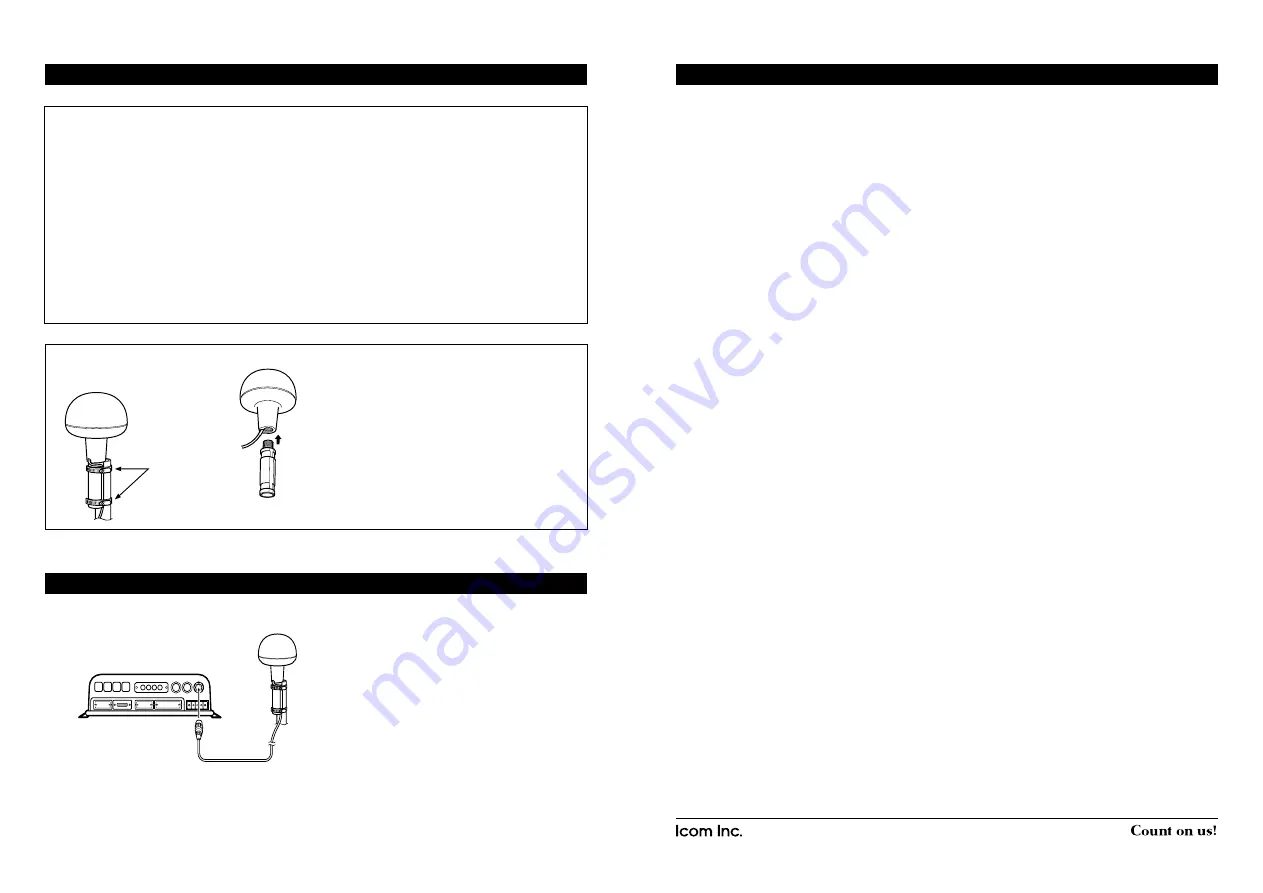
About calculating position
The GPS receiver acquires signals from GPS
satellites. It calculates its position by the orbit
information of the GPS satellites and needs to
measure the distance between itself and three
or more GPS satellites to obtain a reliable posi-
tion. The GPS receiver acquires all available
satellites when it is powered up. Normally, it
takes approximately 1 minute for determining a
position.
In places where the GPS signals cannot reach
the GPS receiver, such as around tall buildings,
it may show position errors (misplacement) or
no position reading at all.
As the satellites are continuously moving, mea-
surement of the position or time by the GPS
receiver may take a while, and/or no position
reading can be made in some instances. Even if
the GPS receiver acquires signals from three or
more GPS satellites, it may take a longer time to
determine a position depending on the satellite
locations.
1-1-32 Kamiminami, Hirano-ku, Osaka 547-0003, Japan.
A-6747H-1EX-
w
Printed in Japan
© 2009–2011 Icom Inc.
Icom, Icom Inc. and the Icom logo are registered trademarks of Icom Incorporated (Japan) in Japan, the United
States, United Kingdom, Germany, France, Spain, Russia and/or other countries.
MarineCommander is a trademark of Icom Incorporated.
ATTENTION
MOUNTING
Location precision
The GPS receiver automatically calculates its
position when it acquires signals from three or
more GPS satellites.
The GPS satellite’s measurement error is about
±10 meters, however this can vary up to several
hundred meters, depending on the surrounding
environment.
The GPS information and its accuracy varies,
depending on the GPS system being acquired,
place and time.
About NMEA sentence
When the current position data cannot be re
-
ceived due to the GPS signal being blocked
by something, the GPS receiver sends the last
memorized NMEA sentence, but the sentence
may include invalid data.
ï
Mounting locations
The GPS receiver should be mounted in a
location that has a clear, unobstructed view
in all directions and as far away from interfer-
ence as possible, for the best reception. When
selecting a mounting location, follow the guide-
lines below.
- The location should be at least 1 m (3.28 ft.)
away from a VHF/UHF antenna, and 4 m
(13.12 ft.) away from a MF/HF antenna.
- The location should be at least 5 m (16.40 ft.)
away from an Inmarsat antenna.
- Be sure the location is out of the radar beam.
- Be sure the location will not be shaded by a
random antenna or mast.
- Mount the GPS receiver as high as possible.
We recommend that you place the GPS receiv
-
er in the desired location temporarily, and see
if it receives any interference.
ï
Installation
The supplied extension pipe is to be inserted
firmly into the base of the GPS receiver and
screwed in a clockwise direction.
Using the supplied hose clamps, the GPS
receiver can be stabilized to the mounting mast.
(Example: Connect to the MarineCommander
™
)
Prior to any operation, it is important to make
sure that all connections are made accurately.
All connections should be made only by certi-
fied persons.
The output connector is to be connected from
the GPS receiver to the GPS data input terminal
of the MarineCommander
™
.
CONNECTION
Hose clamps
(Supplied)
MarineCommander
™
MXP-5000
MXG-5000
[GPS]




















